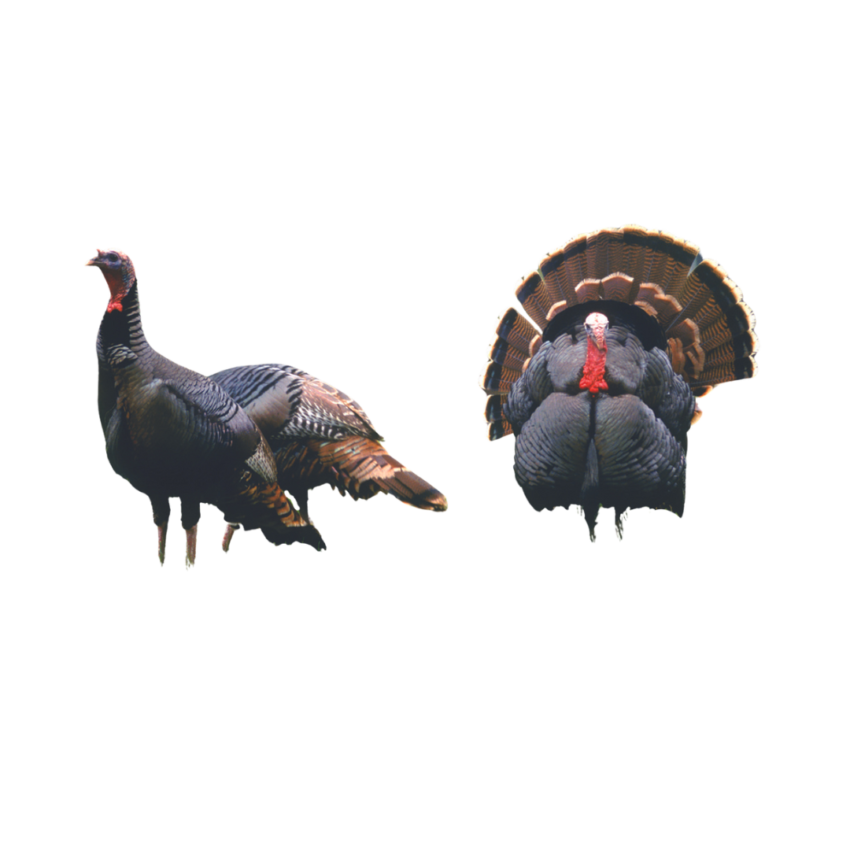Kenzie James
news@greenepublishing.com
The Florida Fish and Wildlife Conservation Commission (FWC) announced the kickoff of the 2024 Wild Turkey Summer Survey on Saturday, June 1.
The annual survey, open until Saturday, Aug. 31, is for Florida residents to report their sightings of the native bird to help FWC biologists manage the wild turkey population around the state. The FWC website said the survey is part of a larger regional study, designed to provide more insight into the distribution and abundance of wild turkeys. The 2023 Wild Turkey Summer Survey Report gathered over 3,100 resident observations, totaling a sighting of 20,595 wild turkeys in 65 of Florida's 67 counties.
There are two subspecies of wild turkeys in Florida, the eastern wild turkey and the Florida wild turkey. The Florida wild turkey is only found in the Florida panhandle and north of the peninsula. Both subspecies live in forests or forest edges, and live throughout the state in any suitable habitats. The FWC describes these birds as large birds with long legs, wide, rounded tails and a small head on a long, slim neck. The birds tend to flock together, and courtship and nesting occur in the spring.
“In Florida, wild turkeys begin breeding in late February and early March,” the FWC website said. “Egg laying usually begins in mid-to late March, though nesting dates can range from early March to June.”
Hens lay around nine to 12 eggs when nesting, and those eggs become poults when they hatch. Poults cannot fly for the first two weeks, and at around four weeks old, they can fly into low branches and small trees. Overall, the birds do not fly frequently, preferring to walk, but they can reach up to speeds of 55 miles per hour when they do fly. Wild turkeys can walk hundreds of acres in a day, searching the ground for food. Their diet includes acorns, seeds, fruits, insects, leaves and small vertebrates.
While the FWC has asked for residents to record their observations of wild turkeys, they want to keep resident-turkey interactions only as observations.
“When wild turkeys lose their fear of people, they can begin acting aggressively and become a public safety concern. You can help avoid wild turkey conflicts with the following tips,” the FWC said.
• Do not feed wild turkeys
• Aggressively haze turkeys who do not move away from people or yards, or even approach people, pets or cars by chasing the turkeys and doing one or all of the following:
⁃ Waving your arms, clapping your hands, or yelling
⁃ Making loud noises with an air horn or pots and pans
⁃ Spraying with a strong jet water from a hose
⁃ Waving or swatting, but not hitting the turkey, with a broom
⁃ Opening a large umbrella
Jefferson, Madison, Lafayette, Suwannee and Hamilton Counties are mostly under “high” and “medium” rankings for the relative abundance in the county. They are also all ranked under “fair” and “good” for wild turkey habitat suitability, which are the highest rankings for suitability.
The Wild Turkey Summer Survey asks Florida residents to record all wild turkeys seen as hens, poults and males if possible, and all turkeys that couldn't be identified by one of the three classifications. The survey also asks for the date and county where the turkeys were seen, if the resident was driving, and if they believe the birds are the same turkeys they've previously reported. The link to the Wild Turkey Summer Survey, and more details about wild turkeys, is found at https://myfwc.com/hunting/turkey/brood-survey.

